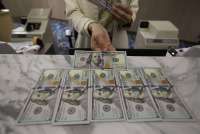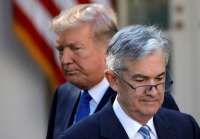JAKARTA. The government has agreed to increase the energy subsidy budget by Rp 63.7 trillion (US$7 billion) for fuel and electricity because consumption has surpassed the state budget allocation.
Finance Minister Agus Martowardojo said on Tuesday that the fuel subsidy would balloon to Rp 168 trillion versus the Rp 129.7 trillion planned in the revised 2011 state budget. The electricity subsidy also soared to Rp 91 trillion from the government’s initial allocation of Rp 65.6 trillion.
This is the second time that the government has increased the fuel and electricity subsidy for the year. Government officials have cited smuggling, surging global oil prices and increasing consumption as reasons for the soaring energy subsidy, particularly for fuel.
“We predict [subsidized fuel consumption] will reach 41.9 million kiloliters from the planned 40.4 milion kiloliters. We are discussing ways to control the volume of subsidized fuel because in 2012, the allocation will only be 37.5 million kiloliters,” Agus said.
The government will focus on limiting the fuel subsidy volume in Java and Bali next year, where Indonesians consume subsidized fuel the most. It remained indecisive about raising subsidized fuel prices, an unpopular policy that could turn away potential voters, economists have said.
The government’s “poorly targeted” subsidies have received widespread criticism from local and international observers and financial institutions, including the World Bank, as they block funds for development projects that could grow and create multiplier effects for the country’s economy.
“This [adding subsidies] is making our fiscal sustainability unhealthier,” said Tony Prasetiantono, the director of the Gadjah Mada University (UGM) center for economic and public policy studies.
There are two options for the government to cut the growing subsidies, he added. The first is raising prices of subsidized fuel (Premium) by Rp 500 to Rp 1,000 per liter, and the second is requiring vehicles with engine capacities of 1,800 cc and greater to use non-subsidized fuel (Pertamax).
“If the first option is taken, I suggest that fuel prices be increased by Rp 1,000 per liter. If the fuel prices are raised by Rp 500 per liter, this must be followed by the second option,” Tony said.
Energy and Mineral Resources Minister Jero Wacik, who holds an important position in the ruling Democratic Party, said maintaining the fuel subsidy was “in the public’s interest” because the government feared that raising subsidized fuel prices could burden the poor.
However, the government has also noted that most of the subsidized fuel is consumed by those who are financially capable. (Esther Samboh/ The Jakarta Post)
Govt agrees to spend extra Rp 63.7t on energy subsidy
December 14, 2011, 09.51 AM
/2011/12/14/1571566147p.jpg)
ILUSTRASI. Orang-orang yang memakai masker wajah mengambil foto selfie di Capitoline Hill, saat Italia menghadapi lonjakan infeksi penyakit virus corona (COVID-19), di Roma, Italia 22 Oktober 2020.
Reporter: Edy Can
| Editor: Edy Can
Latest News
-
January 14, 2026, 05.02 PM
Indonesian Ride-Hailing Industry Set for Shake-Up Under Draft Presidential Decree
-
January 14, 2026, 01.26 PM
Indonesia Scraps Plan to Introduce B50 Biodiesel This Year
-
January 14, 2026, 10.07 AM
Indonesia Central Bank to Continue Intervening to Defend Depreciating Rupiah
-
January 14, 2026, 07.30 AM
Dollar Rebounds with CPI Data in Line, Bankers Back Powell
-
January 14, 2026, 05.25 AM
Wall Street Slips on Credit Card Proposal, Rate Bets Boost Gold
-
January 13, 2026, 01.41 PM
Indonesia Official Says Launch of B50 Biodiesel Depends on Crude Oil, Palm Oil Prices
-
January 13, 2026, 07.12 AM
Trump Administration Probe of Fed's Powell Sparks Pushback
-
January 13, 2026, 05.32 AM
Stocks and Treasuries Calm After Fed Indictment Jitters, Dollar Weakens
-
January 12, 2026, 10.17 AM
GLOBAL MARKETS: Stocks Wobble, Dollar Tips as Trump-Fed Feud Deepens









